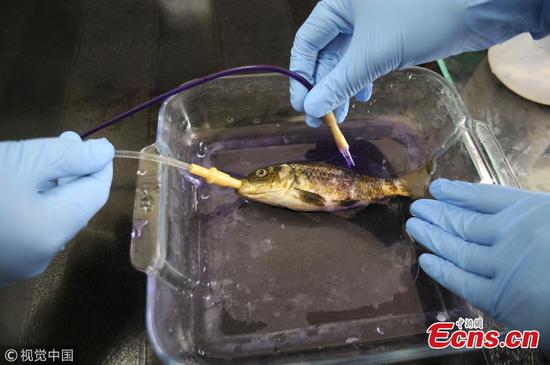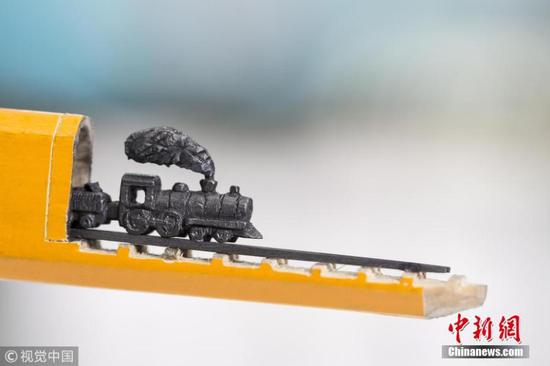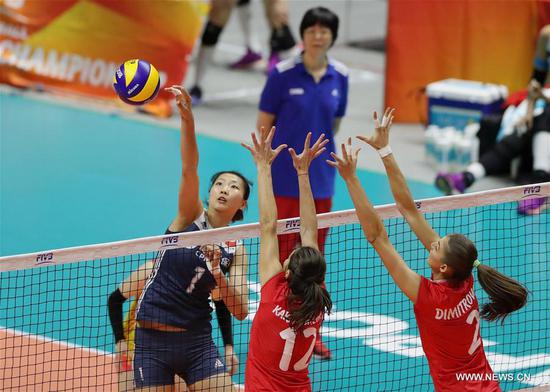American researchers developed an implantable, biodegradable wireless device that could speed nerve regeneration and improve the healing of a damaged nerve, the first example of a bioelectronic medicine.
The study published on Monday in the journal Nature Medicine reported the device, the size of a coin and a sheet of paper in thickness, which delivers regular pulses of electricity to damaged peripheral nerves in rats after a surgical repair process.
The wireless device could work for two weeks before being naturally absorbed into the body, accelerating the regrowth of nerves in their legs and enhancing the ultimate recovery of muscle strength and control, according to the study.
Car accidents and sports injuries can injure the peripheral nerves, leaving people with numbness, tingling and weakness and a recovery may take months.
"We know that electrical stimulation during surgery helps, but once the surgery is over, the window for intervening is closed," said co-senior author Wilson Ray, associate professor of neurosurgery at Washington University.
"With this device, we've shown that electrical stimulation given on a scheduled basis can further enhance nerve recovery," said Ray.
"These engineered systems provide active, therapeutic function in a programmable, dosed format and then naturally disappear into the body, without a trace," said Northwestern University's John Rogers, pioneer in bio-integrated technologies and co-senior author of the study.
They designed and developed a thin, flexible device that wrapped around an injured nerve and delivered electrical pulses at selected time points for days before the device harmlessly degrades in the body.
The device is powered and controlled wirelessly by a transmitter outside the body that acts much like a cellphone-charging mat, according to the study.
Researchers then studied the bioelectronic device in rats with injured sciatic nerves. This nerve sends signals up and down the legs and controls the hamstrings and muscles of the lower legs and feet.
They used the device to provide one hour per day of electrical stimulation to the rats for one, three or six days or no electrical stimulation at all, and then monitored their recovery for the next 10 weeks.
They found that any electrical stimulation was better than none at all at helping the rats recover muscle mass and muscle strength.
It also showed that the more days of electrical stimulation the rats received, the more quickly and thoroughly they recovered nerve signaling and muscle strength and no adverse biological effects were found.
By varying the composition and thickness of the materials in the device, they can control the precise number of days it remains functional before being absorbed into the body. Now, new versions of the device can provide electrical pulses for weeks before degrading.
"This isn't a therapeutic option yet either, as it hasn't been tested in people. But I'm excited about it because it's a new approach to treating peripheral nerve injury, and it might offer a solution where really there is none today in the clinical realm," said Ray.


















































